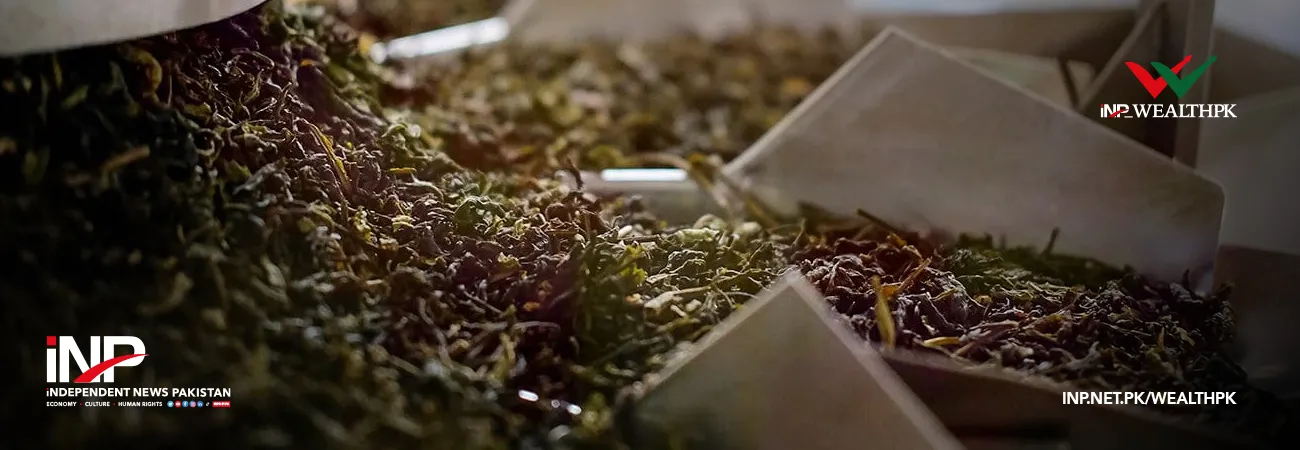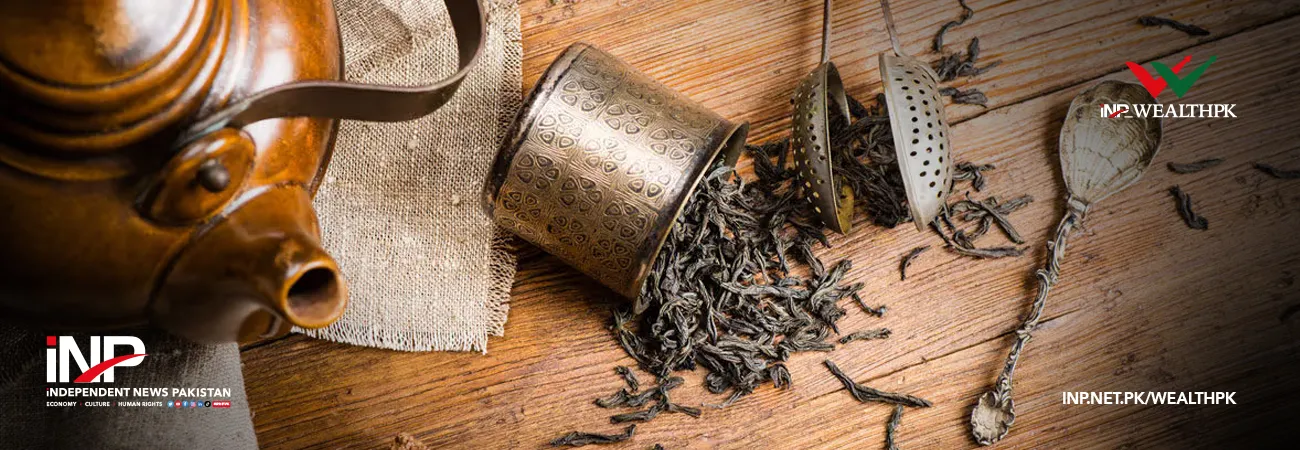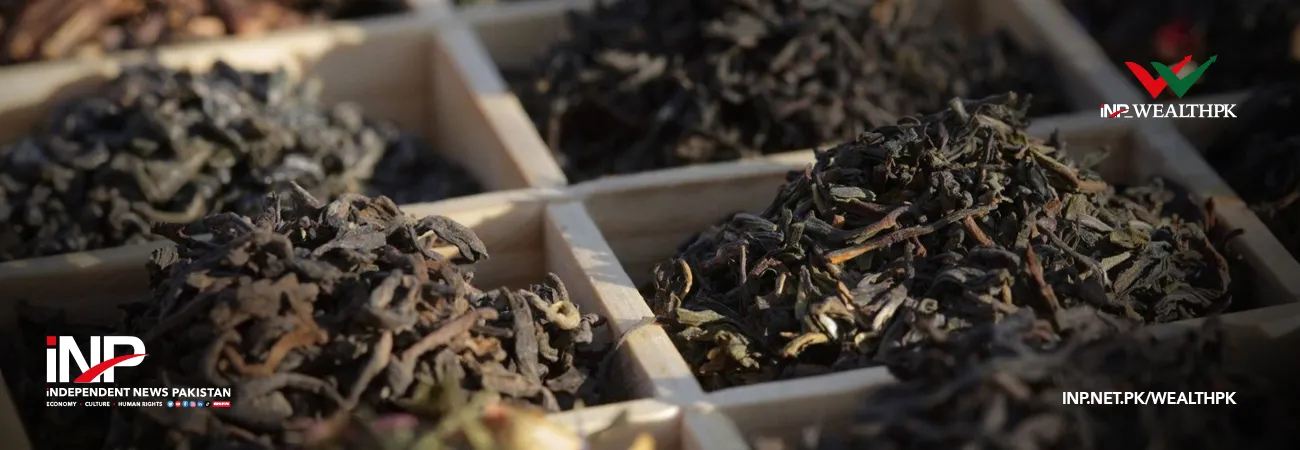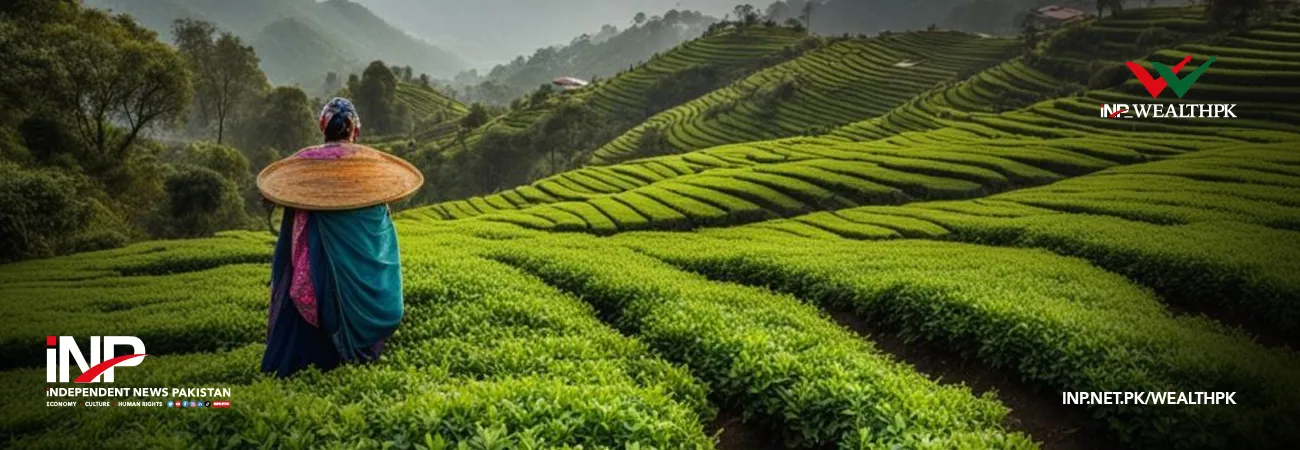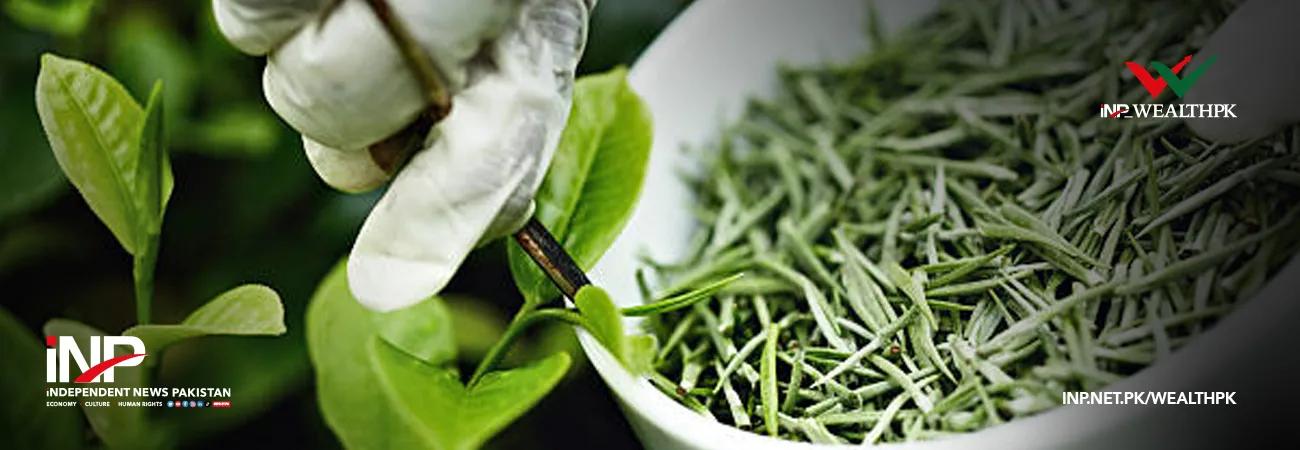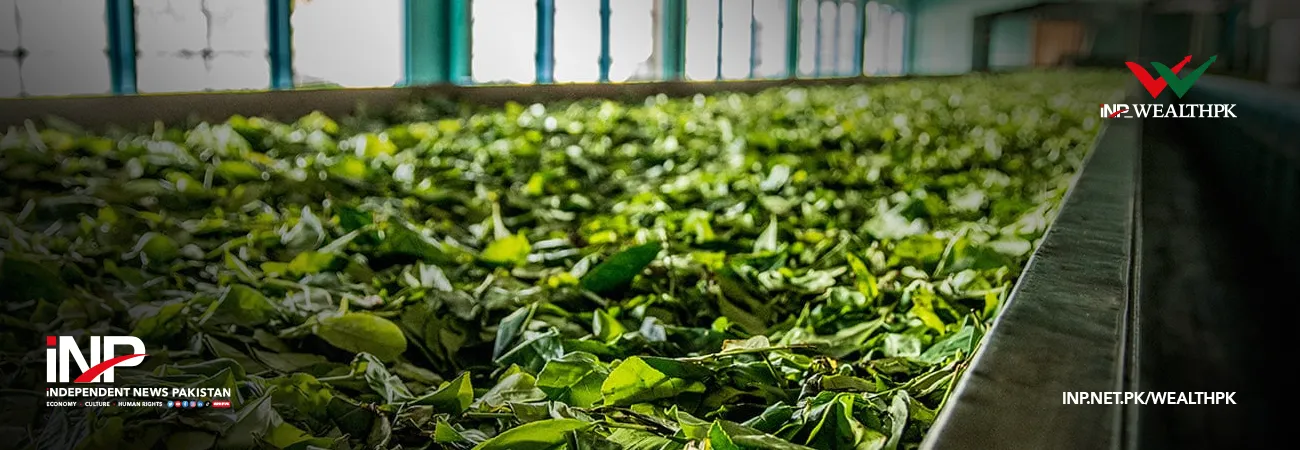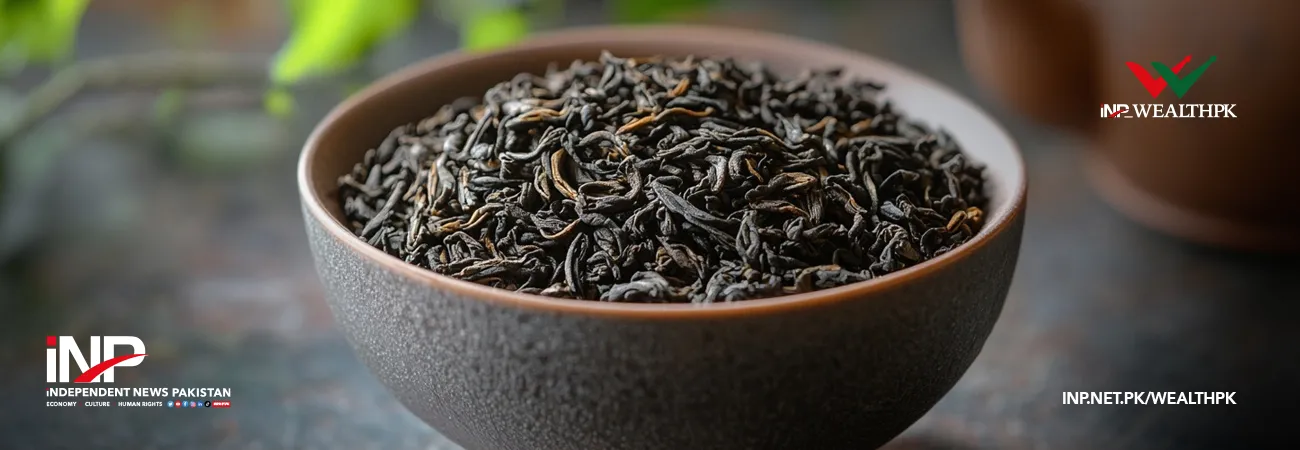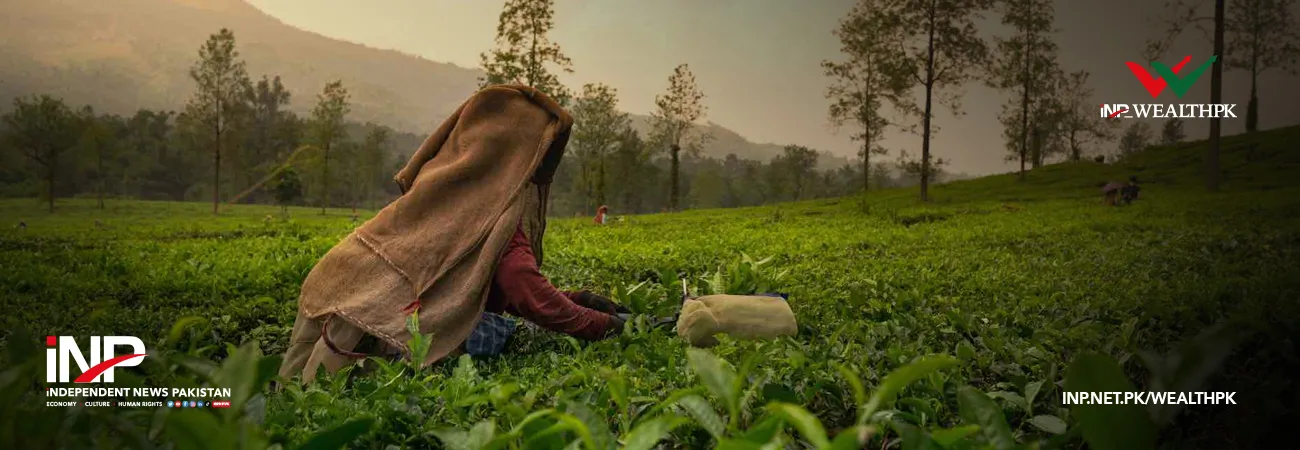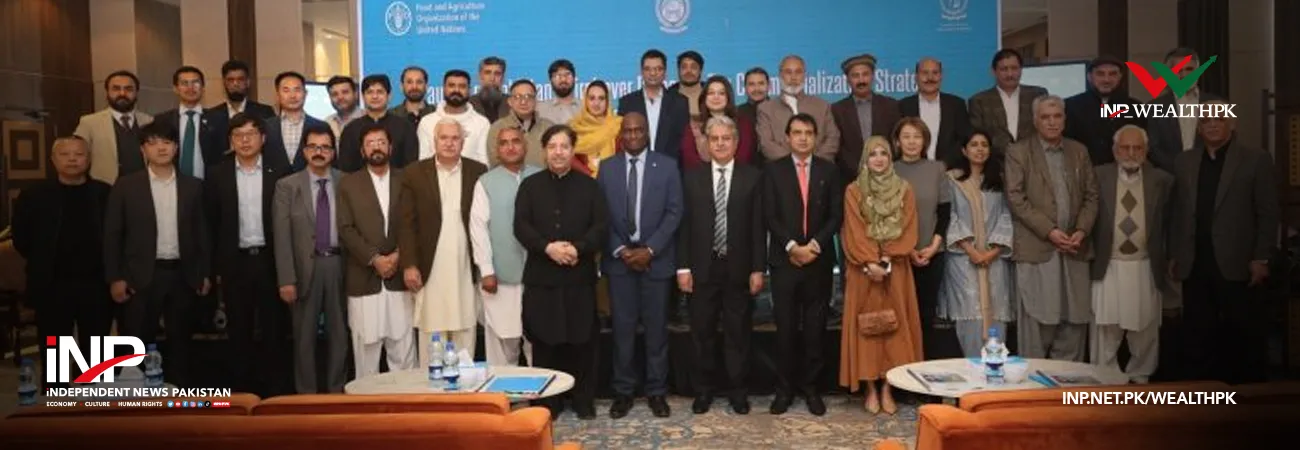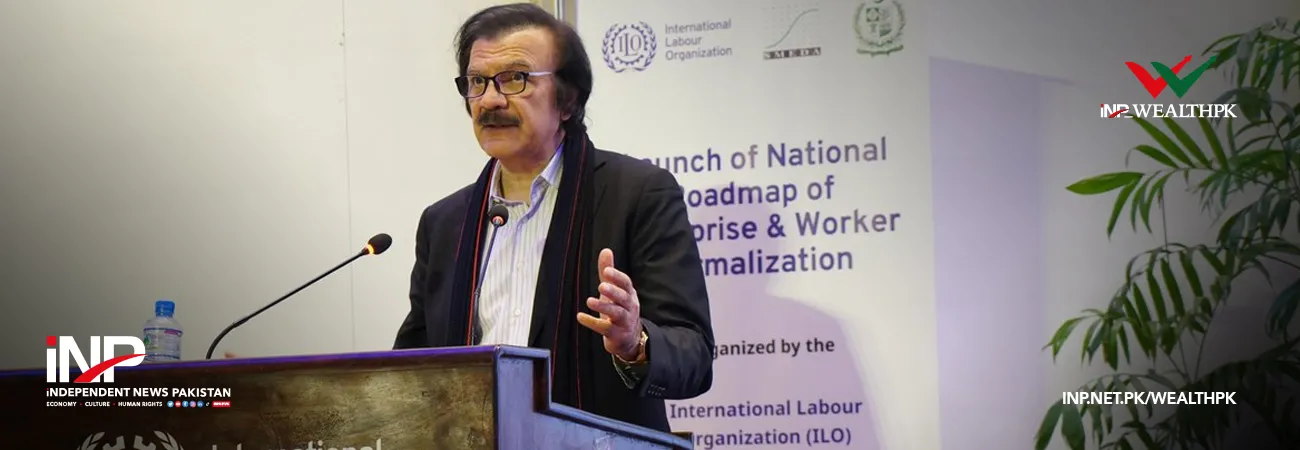آئی این پی ویلتھ پی کے
Azeem Ahmed Khan
Pakistan, despite having ideal geographic and climatic conditions for tea cultivation and being the world’s largest tea consumer, remains dependent on imported tea, spending a staggering Rs92 billion annually.
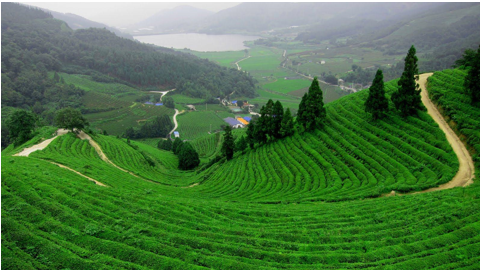
This was stated by Dr Farrukh Sayyar Hammad, former director of the National Tea and High-Value Crop Research Institute of the Pakistan Agricultural Research Council (PARC).
Talking to WealthPK, Hammad, who is also the pioneer of Pakistan’s tea-growing trials, said, “Local experiments have proven tea can be successfully grown in the northern highlands.”
“With four seasons and varied topography, the country has vast potential, especially in Mansehra, Swat, Battagram, Buner, and Dir districts,” he said, adding that these regions offer the acidic soils and high rainfall required for tea plants to thrive.
“PARC conducted detailed trials with the help of Chinese experts, who provided us with both seeds and technical support,” he recalled. “We successfully completed the full cycle, from planting, plucking, processing green and black teas, to even blending and marketing.”
The PARC team prepared plants using both seed and cutting methods, and selected the best-performing plants to propagate further, he said. “These trials confirmed that tea could grow in Pakistani soil and climate,” he added.
The team made good tea, took it to local farmers, and grew it on their land to prove that it is possible to grow tea in Pakistan, Hammad said.
Tea plants, he said, once established, can live up to 90 to 100 years, with economic yields beginning around the fourth or fifth year, depending on weather conditions. He said that he has seen tea plants in China that are more than 800 years old, though their production starts decreasing with the passage of time.
Asked why tea production failed to take off in Pakistan despite scientific success, Hammad said the reasons lie not in agriculture, but in policy, economics, and social structure.
Unlike tea-producing countries like Sri Lanka, Turkey, and Japan, Pakistan lacks a tea board or an authority to oversee cultivation, support farmers, and build supply chains.
“We had a tea board when East Pakistan existed, and at that time, we were tea exporters,” Hammad explained. “Post-separation, the board became irrelevant, and no new structure was established, but today, we need a tea authority more than ever.”
Secondly, tea requires three to five years before the first harvest, a timeline most Pakistani farmers cannot afford, Hammad said. “Pakistani farmers live season to season, and they cannot wait years without returns,” he added.
Moreover, when land is shared among family members, long-term crops become a liability, he observed. In cases where tea was planted, succession issues disrupted continuity, he said, noting, “Landowners pass away, and heirs often disagree on whether to continue with tea, switch to seasonal crops, or even sell the land.”
Hammad said the government policies require land to be leased before development projects, but bureaucratic bottlenecks and lack of dedicated projects mean land acquisition remains stalled. “No lease, no plantation,” he summarised.
Tea must be processed within three to five hours of plucking; therefore, in established tea economies, factories are often built near plantations, he said. However, in Pakistan, where the crop has not yet reached scale, green tea, black tea, and packaging units are limited, discouraging both investors and local interest, he added.
Hammad, who now works as a technical consultant with the Food and Agriculture Organisation, which has launched a project to establish a structured approach for tea cultivation in Pakistan, said the initiative’s goal is to develop a governance framework involving PARC, the Ministry of National Food Security & Research, Ministry of Commerce, and provincial departments of forest, agriculture, water management, and tourism.
“A Chinese private company has recently expressed interest in launching commercial tea plantations along the China-Pakistan Economic Corridor,” he said.
As part of this initiative, tea experts held meetings with officials from the Ministry of National Food Security & Research and its affiliated departments, offering their support and collaboration, he added.
“I am hopeful that the company’s involvement will help establish a model for local investors, setting the foundation for tea commercialisation in Pakistan,” Hammad stated.
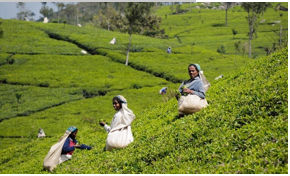
Speaking on the broader vision for tea cultivation in Pakistan, Hammad outlined multiple benefits beyond just crop production. Emphasising the environmental benefits of expanding tea plantations, he said: “We want to take tea cultivation to cultivable wastelands, particularly deforested areas. This will help control soil erosion and reduce siltation in our dams.”
He proposed covering the lower mountain slopes with tea while preserving forests on the higher elevations. “Mountaintops should be kept forested, but the base can be used for tea plantations.”
With the availability of perennial water, small dams can be constructed to manage irrigation through gravitational flow, he said, adding, “This would help combat climate change.”
Hammad also highlighted the potential for tourism, saying, “In all tea-producing nations like China and Japan, tourism tied to tea gardens is a significant income source.”
“Pakistan could replicate this model,” he stated, noting that the CPEC runs through areas suitable for tea cultivation. “Both China and Pakistan are interested in developing tourism along the CPEC route, and tea gardens could be a major attraction,” he added.
Discussing the financial feasibility, he estimated the cost to be between Rs400,000 and Rs500,000 per acre over three years. “It is a low-maintenance crop, but like any plant, it needs care because even fruit trees become wild if not pruned,” he added.
According to Hammad, there are two primary methods of pickings: hand-plucking and mechanical pickings. “While mechanical harvesting is an option, hand plucking allows for selective picking of two leaves and a bud, which results in higher quality tea.”
Credit: INP-WealthPk


